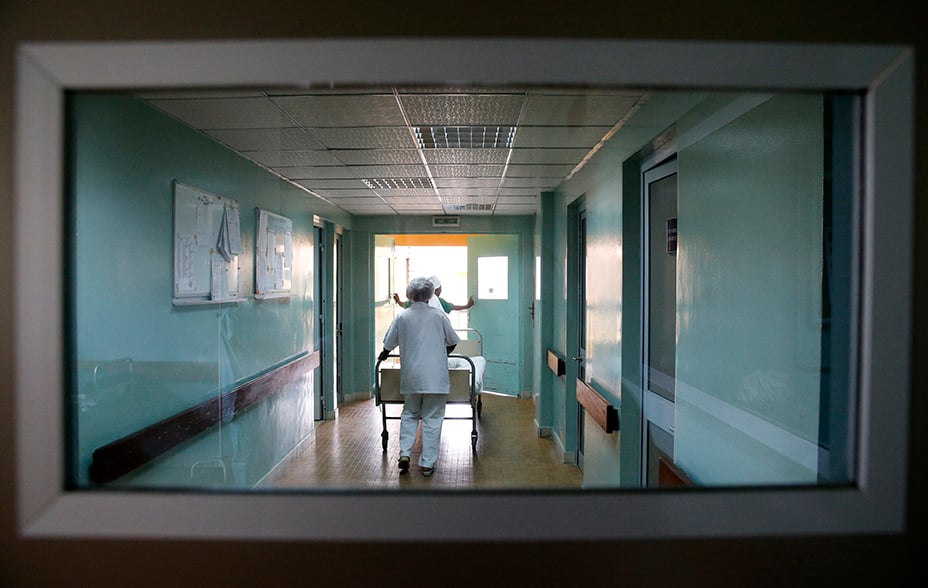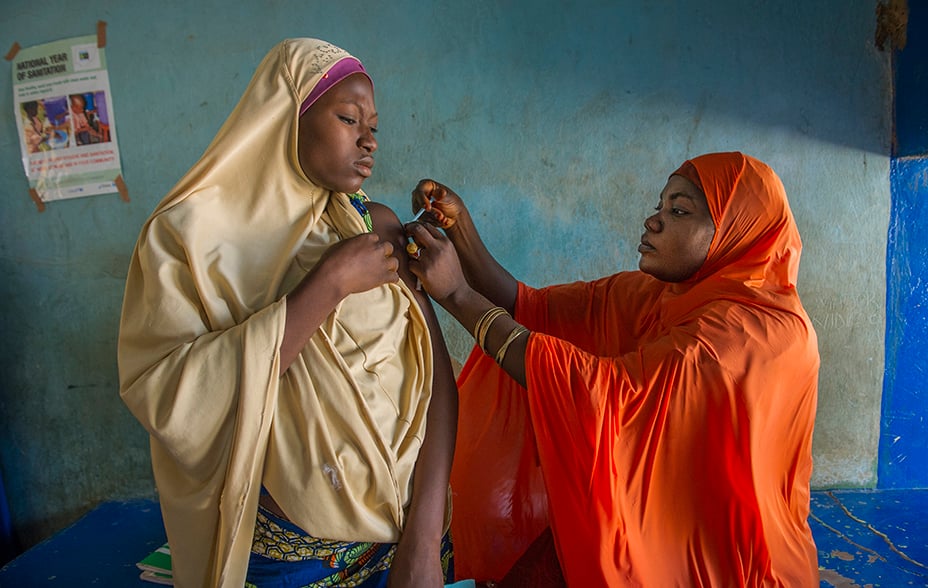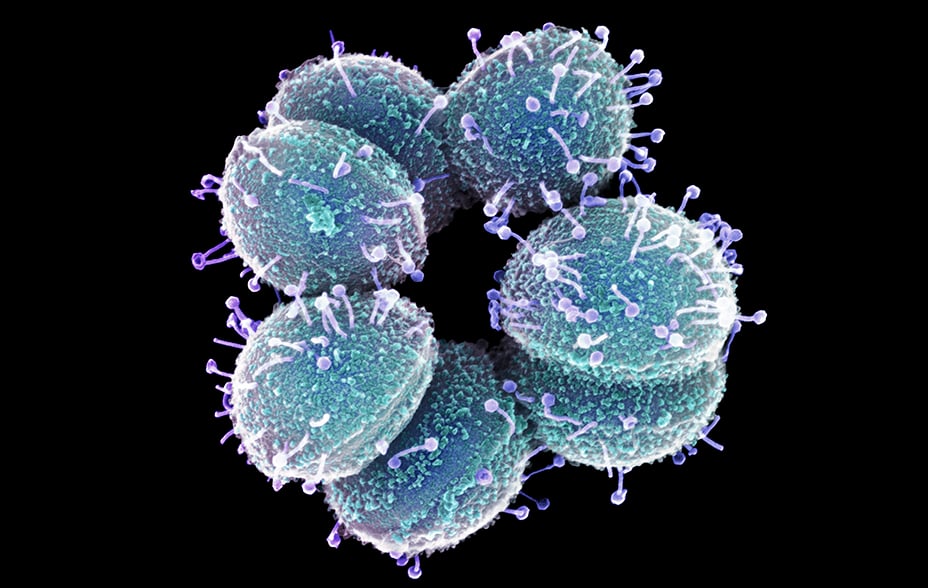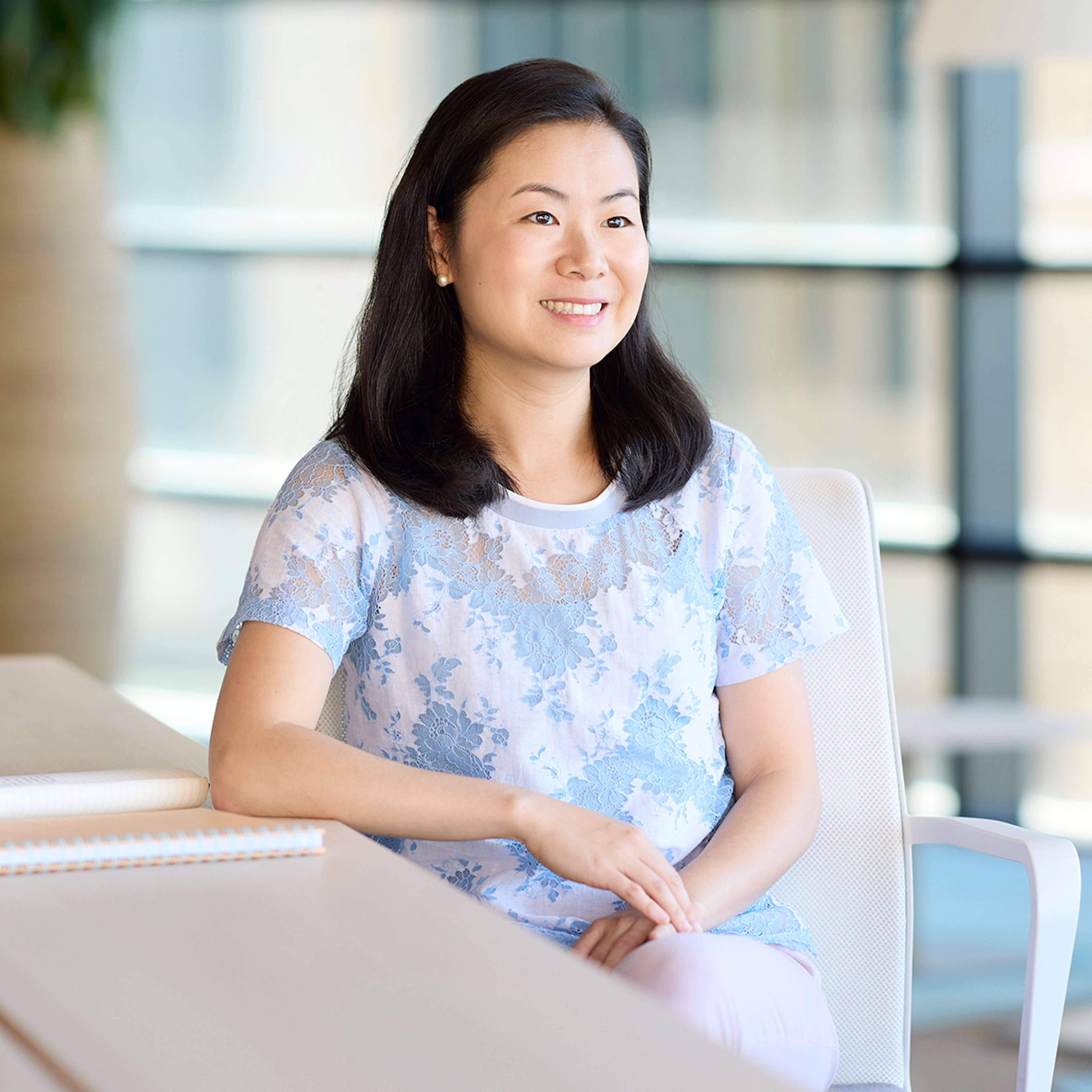
All investment strategies have the potential for profit and loss, capital is at risk. Past performance is not a guide to future returns.
The thoughtless person playing with penicillin treatment is morally responsible for the death of the man who succumbs to infection with the penicillin-resistant organism.
This is how the world ends
Life without antimicrobials is hard to imagine. These drugs, which kill or prevent the spread of disease-causing microbes like bacteria, viruses, fungi, and protozoans, have greatly influenced the doubling of our life spans over the 20th century. They treat infections like tuberculosis, AIDS, yeast infection, and malaria. They also underpin many modern medical procedures, from tooth extractions to caesarean sections to organ transplants.
But microbes have survived over billions of years and continue to evolve to resist our human attempts to kill them. Scientists have warned about antimicrobial resistance (AMR) for decades, yet a broken market means that antimicrobial research has all but dried up. With few new drugs in the pipeline and existing ones losing their potency, we are heading back to an era when a prick from a rose thorn could lead to amputation or even death.
That horrific reality is already here. In 2019, resistant infections were implicated in the deaths of five million people worldwide and contributed directly to over 1.2 million deaths. The World Health Organisation (WHO) predicts deaths directly caused by AMR to increase tenfold by 2050. If nothing is done, this would mean annual costs of over $1tn and related healthcare costs amounting to $100tn. That is a figure roughly equivalent to five times the current US GDP.

The value to society of mitigating the effects of AMR is obvious, yet AMR struggles for attention and for funding.
AMR threatens our entire healthcare ecosystem. Tackling it will require interventions and investments on multiple fronts, from improved diagnostics and novel therapeutics to better incentivisation and sustainable economic models.
There are glimmers of hope as global efforts are emerging to address funding, pricing and manufacturing. New tools are also dramatically changing drug discovery and development. Combined, these trends could lead to a reversal in the decades-long slump in antimicrobial innovation.
The value to society of mitigating the effects of AMR is obvious, yet AMR struggles for attention and for funding. We invite you to engage with the pandemic unfolding before our eyes.
A broken market
Before the 1990s, scientists kept up with antimicrobial resistance by discovering around four to six different classes of antibiotics every decade. That stopped. The last new class of antibiotics discovered was in 1987. Meanwhile, the widespread misuse of antimicrobials in humans and agriculture has contributed to an explosion of resistant microbes in the ecosystem. The Centre for Disease Control and Prevention estimated in 2016 that at least one-third of antibiotics prescribed in the US are unnecessary. Less reported is the underuse of antibiotics, particularly in lower and middle-income countries, where millions of people lack access.
Since the 1990s, unfavourable economics have halted antimicrobial research. The combination of low prices and low volumes means that big pharma and start-ups alike find it hard to justify the significant investment of time and resources required for antimicrobial research, particularly for antibiotics.
Like most novel drugs, it takes a median of $1.5bn invested over more than a decade to bring a new antibiotic to market. But the approval hurdle for antibiotics is higher: as well as being safe and effective, they must also be superior to existing antibiotics.

Usually, high quality begets high prices. In other classes of drugs, the prescription volume also makes the case for financial returns.
Not here. The public is used to paying peanuts for antibiotics, and hospitals keep the new ones on the shelves for as long as possible in an effort to fend off resistance. Hence biotechs like Achaogen, Melinta, and Tetraphase found that having each spent over $1bn and nearly two decades bringing new antibiotics to market, they respectively made $0.8mn, $3mn, and $11.9mn in revenues in their first year. This is far less than the estimated $250–500mn over the first 5 years on the market that is necessary for a company to remain operational, let alone generate returns for investors. Unsurprisingly, all three companies went bankrupt between 2018 and 2020.
Just as the AMR crisis becomes unavoidable, we face dwindling pipelines, a talent drain over the last 30 years, and a dire lack of funding. We must change how we value and reward innovation.
The scale of investment needed
Governments and public health organisations have made a start with push and pull incentives to help reduce the burden of drug development costs and provide alternative payment options. To use a parallel example, a similar intervention was Operation Warp Speed. Set up by the Trump Administration to fund Covid-19 vaccine development for the US population, it ultimately allocated $18bn to vaccine makers.
How much funding do antimicrobial companies have at their disposal to fight the AMR crisis? Hundreds of millions. So, while commendable in theory, these funding sources pale in comparison to what Operation Warp Speed has shown is necessary to counter a pandemic. It is clear that large-scale, private funding is needed to solve this global crisis.
Still, it is a start. Already, these public initiatives are creating paradigm shifts in the economic model. As new champions emerge, there are also signs that private investors will also once again revisit this space.
Encouraging more drug development
Push initiatives try to inject cash early into projects so that antimicrobial research and development (R&D) can make it into the later stages of drug development. One example is the AMR Action Fund, a collaboration launched in 2020 between 20 major pharma companies (including GlaxoSmithKline (GSK), Pfizer, Johnson & Johnson) with the WHO, the European Investment Bank, and the Wellcome Trust. Working down the WHO’s list of target compounds, it is investing $1bn to bring between two and four new drugs to market by 2030.
Other notable funding bodies dedicated to the AMR space include the Combating Antibiotic-Resistant Bacteria (CARB-X) group hosted by Boston University and the Biomedical Advanced Research and Development Authority (BARDA) from the US Department of Health. Both are investing several hundred million dollars over three to five years.
Improving the economics
Pull incentives work on the other end, offering new pricing and payment models. In April 2022, the UK launched a subscription model, starting with a pilot of two antibiotics. The idea is to pay upfront based on estimated values of benefit to patients and the NHS (National Health Service) rather than on how much volume is used. The cap is set at £10m annually, and if scaled up globally would translate to a £300m contribution.
In the US, a similar model has been proposed through the PASTEUR Act that was filed with Congress in 2021. A complementary DISARM Act would allow Medicare to pay more for antibiotics, increasing the drugs’ value and promoting their appropriate use. Finally, the GAIN Act extends patent expiries and is another incentive for pharma to create new antibiotics.
If passed, the new policies would align incentives with stewardship and equate to $1bn of annual federal funding per antibiotic. These measures could become significant funding sources, rejuvenating the number of companies working in antimicrobial research and increasing their profitability.

Global solutions for a global problem
AMR disproportionately affects lower and middle-income countries (LMICs). Large swathes of Africa and Southeast Asia have wrestled with a growing list of resistant microbes. Malaria is the latest confirmed case with widespread drug resistance. Microbes do not recognise geographic boundaries, and global misuse has contributed to the problem.
China and India are two of the largest producers and users of antibiotics and have the highest levels of antibiotic resistance. The two countries recognise their vulnerability and have also implemented national AMR action plans to inject cash into R&D. While they hold valuable know-how from manufacturing 80 per cent of all antibiotics (and many other drugs) consumed globally, they are now moving upstream into drug discovery and development.
In India, Bugworks Research stands out as a notable home-grown antibiotics biotech. In China, contract research and development organisations (CROs and CDMOs) such as Zai Lab are attractive partners for biotechs abroad that are looking to share the risks in drug development.
Notably, the new therapeutics that succeed in this region are likely to benefit other LMICs, because China and India’s research facilities, factories, and political partners in other LMICs make them hubs for global access. Within today’s volume-based economic framework, growth will come from emerging markets for a while yet.
Hunting for ideas
Already new approaches and tools are shaking up antimicrobial innovation. These include:
- new diagnostics that allow more accurate diagnosis and use of antibiotics
- vaccines and bacteriophages (viruses that kill bacteria) to prevent and combat infections
- employing techniques such as CRISPR, synthetic biology, and machine learning to aid in the discovery and development of new solutions
Combined, these developments could set us on the correct course to solve the broader AMR crisis.
Better diagnostics go hand in hand with stewardship
New and improved diagnostics will be crucial in mitigating the misuse of antibiotics. Antibiotics do not work on viral infections, yet a 2017 survey showed that 76 per cent of doctors prescribe drugs after guessing what the infection could be. Patients are also often misinformed; the same survey indicated that 30 per cent of patients directly ask for antibiotics, regardless of the diagnosis. With current lab tests taking up to 72 hours and still not very reliable, there is a great need for accurate, portable, and rapid point-of-care tests.
One significant change is the switch to looking at the host immune response – rather than the traditional pathogen-based approach of focusing on the organism invading the body. By measuring the immune system’s response to the microbe, the biomarkers found could reliably distinguish between the type of infection (viral, bacterial, or an infection from colonisation) and its severity. This would mean antibiotic usage could be targeted more effectively.

MeMed and Lumos Diagnostics have both taken the host response approach. Their tests can accurately distinguish between bacterial and viral infections with high accuracy and within 10–15 minutes. Tests like these would also be at the point of care rather than need to be sent to a centralised lab. They would revolutionise the workflow at clinics and hospitals and completely change how antibiotics are used.
‘Diagnostics on a stick’ have also arrived, and they could dramatically change how we interact with infectious diseases. Our experience with rapid antigen tests for Covid-19 showed how a near-instant result informed whether we went to work, were denied boarding on a plane, or should seek further medical help.
In the antimicrobial space, many point-of-care tests are for specific microbes and their resistance to current antimicrobials. For example, the 2020 AMR Diagnostic Challenge winner, Visby Medical, has a “patient-side, disposable, molecular PCR device” for microbes that cause gonorrhoea. Such tests rule out which drugs won’t be effective and can be deployed in the field, thus saving time and, ultimately, lives.
Vaccines prevent infections
Another approach to preventing AMR is to avoid having to kill microbes in the first place. For this, vaccines against infectious diseases are a great solution. Because developing vaccine resistance is incredibly rare, we can deploy vaccines widely without worrying about drug resistance.
We already have vaccines for several bacterial diseases, including pneumonia, tuberculosis and cholera, but many more diseases are without one. For example, despite 40 years of research, we do not have a vaccine to prevent HIV infection.
It is primarily the big pharma companies who have made progress here – GSK on Shigella, Johnson & Johnson on E. coli, and Pfizer on several bacteria strains. Very recently, GSK also just got pre-qualification for its malaria vaccine, Mosquirix. With the WHO supporting a ‘Vaccines for AMR’ agenda, there has been a recent spate of financial commitments from these giants toward vaccine R&D in infectious diseases, particularly addressing LMICs.
The Covid-19 pandemic saw the debut of mRNA vaccines. Pfizer-BioNTech and Moderna have shown the speed and safety with which such vaccines can be manufactured and deployed. Unlike the traditional vaccines made of attenuated viruses, mRNA is a highly flexible platform. It is currently focused on viral infections and cancers. But it could be translated into developing a vaccine for resistant microbes, where we would theoretically only need the mRNA sequence of the antigen from the resistant pathogen.
Indeed, the mRNA platform could be a promising direct solution to AMR. What remains to be seen is how companies make the business case for AMR vaccines. This would certainly involve conversations around localised versus centralised R&D and manufacturing, pricing, distribution, and access around the globe.

Reviving interest in phage therapy
Phage therapy uses viruses to kill bacteria. Felix d’Herelle first observed the biology in 1916, but the subsequent discovery of penicillin in 1928 and antibiotic research eclipsed interest in bacteriophages. Unfortunately, a slew of personal allegiances and geopolitics followed, which relegated phage therapy to small pockets of the world, notably in Georgia, Poland and Russia.
Proponents cite the relative lack of side effects. Whereas those opposed are quick to point out that phages can only go after specific bacteria, while ‘broad-spectrum’ antibiotics can kill multiple strains simultaneously. Continued mistrust between countries means it is still a highly debated therapy.
But more recently, two powerful testimonials have brought renewed interest, and research has boomed. In Dr Stephanie Strathdee’s 2017 TED Talk, she shared how her husband, Tom Patterson, had contracted the antibiotic-resistant Acinetobacter baumannii, more commonly known as ‘Iraqibacter’. As an infectious disease researcher, she was able to call upon the widely-dispersed labs across the US and ultimately found a phage that matched Tom’s bacterium target successfully. Tom survived due to the emergency administration of phage therapy.
A more tragic subsequent case was Mallory Smith, a cystic fibrosis sufferer who succumbed to resistant Burkholderia cepacia aged just 25 years old. Her last resort was also a phage, ‘crowd-sourced’ with the help of Dr Strathdee. The post-mortem remarkably showed that the phage had worked. The tragedy was that it was administered too late. Her story is chronicled in a posthumous publication of her diary, Salt in My Soul: An Unfinished Life.
Both cases highlight the need for large phage banks. A winner of the newly created AMR Action Fund, Adaptive Phage Therapeutics (APT), is doing just that. What’s more, APT’s approach, aided by genome sequencing and machine learning, can adapt to the emergence of future resistant superbugs.
Another solution to address the specificity of phages could be to develop programmable phages that recognise and respond to the bacteria it finds. Companies such as Felix, Armata Pharmaceuticals, and PhagoMed work in this space. Even more are the numerous microbiome-based solutions that leverage phages to target bad bacteria without destroying the wider gut flora.
At this year’s Global AMR Congress, the buzz around phages confirmed the renewed interest in this century-old therapy. Spurred on by new synthetic biology techniques involving machine learning and data mining, phage therapy is poised to become a complementary treatment option to traditional antibiotic therapies.
New tools in our toolkit
The success of these new therapeutics and diagnostics are accelerated by the powerful technologies we deploy across biotechs and medtechs. Tools like machine learning, ‘omics’ (such as genomics, proteomics, and metabolomics), and genetic engineering tool CRISPR, are changing the face of drug discovery and development. They too, can be instrumental in propelling forward antimicrobial R&D.
Big data and machine learning
Drug discovery often begins with target identification: you find a biological target implicated in a disease, then match it to a drug molecule that interacts with it. It sounds simple, but it is incredibly complex to do.
Machine learning and data mining effectively sort through these large libraries of targets and can simultaneously add to them. Such tools are especially useful for antimicrobials, where there is a constant evolution and thus a constantly growing set of new targets to comb through.
For drug discovery, Exscientia has demonstrated that its machine learning platform can save both costs and time. The company shortened the exploratory phase from the industry average of 4.5 years to just one year for its target. In 2020, an MIT-Harvard team also succeeded in using machine learning to discover a new antibiotic, halicin.
On the diagnostics end, big data analytics and genomic sequencing continue to become increasingly cost- and time-efficient. Illumina just announced a new machine that can sequence an entire human genome in half a day for $200. There is hope in the future that bedside genome sequencing can be done in minutes, allowing for real-time identification of microbials and the matching of appropriate therapies to the microbial culprit. This would significantly improve AMR stewardship.
Omics and genetic tools
Sticking with advances in genetic tools, CRISPR, a mechanism by which sections of genetic material can be strategically cut, also underpins the bacteria’s immune system, fortifying them against viral attacks.
In other words, bacteria use a CRISPR defence to evolve by adapting and synthesising bits of DNA they need and destroying the DNA of attackers. Recently, scientists have discovered ways to use the same technology to subvert the bacteria’s CRISPR.
For example, Locus Biosciences and SNIPR Biome have harnessed CRISPR-Cas3 to shred and degrade bacterial DNA so that it cannot repair, thus preventing the number of bacteria from reaching an infection-inducing level.
What’s more, by combining genomics research with big data tools, we can better map the global spread of AMR. They could help us predict where the concentrations are and highlight new ways to combat them.

Cultivating the unculturable
Another aspect where technology is rewriting what is possible in R&D to fight AMR is our ability to cultivate and grow bacteria. Transferring bacteria from in vivo (natural state) to in vitro (on a petri dish) has always been challenging.
Traditionally, you would collect a sample, isolate the bacteria, smear it on an agar plate and hope it multiplies. But 99 per cent of these attempts would fail. This also means that all the antibiotics we have found to date are from the 1 per cent of culturable microbes.
Enter the Isolation Chip Method (iChip). Patented by Novobiotic Pharmaceuticals, it enables previously ‘unculturable’ bacteria to thrive in the lab and so be studied for their ability to produce antibiotics. This method has already yielded the discovery of a new target, teixobactin.
More broadly, this discovery topples the widely-held view that more than 99 per cent of microbes are unculturable and significantly opens up the scope for further discovery.
Citizen science
Finally, not every new approach to fighting AMR needs to be high-tech. ‘Citizen science’ is a grassroots approach that allows the public to participate in scientific research. Just as space enthusiasts observe the starry skies to contribute to NASA’s space research, antimicrobial research has deployed a similar strategy. Each year, tens of thousands of students participate in the Tiny Earth project, a network of students across the globe that are discovering new microbes from the soil in their backyards. Through citizen science, even you and I can contribute to AMR research.

The long game
Tackling the AMR crisis will require political will, scientific innovation, and significant investment over many years, if not decades. For the discovery of new antibiotics, a subscription model would be one step toward changing the incentives. But we need a fully functioning marketplace to attract significant private investment. Until then, opportunities for direct investments into antibiotics may be limited. In the meantime, we will leverage our considerable network to monitor and prepare for step changes in innovation and in the development of new economic frameworks, while extending our search to emerging centres of innovation around the world.
More attractive and investible ideas can be found in diagnostics, vaccines, and phage therapy. Diagnostics are often overlooked as growth businesses, but the AMR space has left considerable opportunity for improved solutions that could become gatekeepers for the therapeutics that follow. For phage therapy, its revival after almost a century of disinterest, combined with new techniques in genomics, machine learning, and synthetic biology, is gaining significance as a much-needed complementary therapy to antibiotics. Finally, for vaccines, the mRNA platform has been a game changer for drug discovery, and it could offer a direct solution to curb the AMR crisis. Several companies are emerging as early winners in each of these sectors. While many are still small or private, we are getting to know them in preparation for future investment.
As we get to know great companies, we are aware of the challenges in finding great investments. The Health Innovation Team’s analysis framework focuses on sustainable growth and the solutions’ benefits to patients. Biotechs also have some unique characteristics, where they often develop a new drug target only to get stuck at scaling up, from which the exit option is often selling to big pharma. Our work is to identify companies that have the vision and execution to flourish. For this, the Health Innovation Strategy has developed a bespoke biotech investing framework to help us identify those most likely to succeed.
There is much for us to reflect on. These companies depend on the larger regulatory environment, and we continue to work with a range of stakeholders, for example on innovations around pricing and access. Thinking about these topics gives us food for thought in our search for investible ideas. It also highlights areas to engage with our current holdings.
Engaging on a global health problem
As long-term investors in the healthcare space, we hope to play a role in progressing global AMR work, potentially accelerating some of the recent positive initiatives. Baillie Gifford will participate in the Global Antimicrobial Awareness Week in November 2022. In our inaugural year, we plan to use this time to discuss with public health officials, scientists, and our colleagues what our role as investors could and should be.
It is also an opportunity for us to connect academics with industry leaders, and link companies with research and funding bodies. We see our part in brokering relationships as an important value-add to the companies we invest in. In future years, we plan to invite you and other like-minded investors to the discussion.
While these are our first steps in exploring and engaging on AMR, we see what we are doing in the context of building relationships that could yield worthwhile future returns, both financially and socially. We welcome your input as you join us on this journey.
Risk factors
The views expressed should not be considered as advice or a recommendation to buy, sell or hold a particular investment. They reflect opinion and should not be taken as statements of fact nor should any reliance be placed on them when making investment decisions.
This communication was produced and approved in November 2022 and has not been updated subsequently. It represents views held at the time of writing and may not reflect current thinking.
This communication contains information on investments which does not constitute independent research. Accordingly, it is not subject to the protections afforded to independent research, but is classified as advertising under Art 68 of the Financial Services Act (‘FinSA’) and Baillie Gifford and its staff may have dealt in the investments concerned.
All information is sourced from Baillie Gifford & Co and is current unless otherwise stated.
The images used in this communication are for illustrative purposes only.
Important information
Baillie Gifford & Co and Baillie Gifford & Co Limited are authorised and regulated by the Financial Conduct Authority (FCA). Baillie Gifford & Co Limited is an Authorised Corporate Director of OEICs.
Baillie Gifford Overseas Limited provides investment management and advisory services to non-UK Professional/Institutional clients only. Baillie Gifford Overseas Limited is wholly owned by Baillie Gifford & Co. Baillie Gifford & Co and Baillie Gifford Overseas Limited are authorised and regulated by the FCA in the UK.
Persons resident or domiciled outside the UK should consult with their professional advisers as to whether they require any governmental or other consents in order to enable them to invest, and with their tax advisers for advice relevant to their own particular circumstances.
Financial intermediaries
This communication is suitable for use of financial intermediaries. Financial intermediaries are solely responsible for any further distribution and Baillie Gifford takes no responsibility for the reliance on this document by any other person who did not receive this document directly from Baillie Gifford.
Europe
Baillie Gifford Investment Management (Europe) Limited provides investment management and advisory services to European (excluding UK) clients. It was incorporated in Ireland in May 2018. Baillie Gifford Investment Management (Europe) Limited is authorised by the Central Bank of Ireland as an AIFM under the AIFM Regulations and as a UCITS management company under the UCITS Regulation. Baillie Gifford Investment Management (Europe) Limited is also authorised in accordance with Regulation 7 of the AIFM Regulations, to provide management of portfolios of investments, including Individual Portfolio Management (‘IPM’) and Non-Core Services. Baillie Gifford Investment Management (Europe) Limited has been appointed as UCITS management company to the following UCITS umbrella company; Baillie Gifford Worldwide Funds plc. Through passporting it has established Baillie Gifford Investment Management (Europe) Limited (Frankfurt Branch) to market its investment management and advisory services and distribute Baillie Gifford Worldwide Funds plc in Germany. Similarly, it has established Baillie Gifford Investment Management (Europe) Limited (Amsterdam Branch) to market its investment management and advisory services and distribute Baillie Gifford Worldwide Funds plc in The Netherlands. Baillie Gifford Investment Management (Europe) Limited also has a representative office in Zurich, Switzerland pursuant to Art. 58 of the Federal Act on Financial Institutions (‘FinIA’). The representative office is authorised by the Swiss Financial Market Supervisory Authority (FINMA). The representative office does not constitute a branch and therefore does not have authority to commit Baillie Gifford Investment Management (Europe) Limited. Baillie Gifford Investment Management (Europe) Limited is a wholly owned subsidiary of Baillie Gifford Overseas Limited, which is wholly owned by Baillie Gifford & Co. Baillie Gifford Overseas Limited and Baillie Gifford & Co are authorised and regulated in the UK by the Financial Conduct Authority.
Hong Kong
Baillie Gifford Asia (Hong Kong) Limited 柏基亞洲(香港)有限公司 is wholly owned by Baillie Gifford Overseas Limited and holds a Type 1 and a Type 2 license from the Securities & Futures Commission of Hong Kong to market and distribute Baillie Gifford’s range of collective investment schemes to professional investors in Hong Kong. Baillie Gifford Asia (Hong Kong) Limited 柏基亞洲(香港)有限公司 can be contacted at Suites 2713–2715, Two International Finance Centre, 8 Finance Street, Central, Hong Kong. Telephone +852 3756 5700.
South Korea
Baillie Gifford Overseas Limited is licensed with the Financial Services Commission in South Korea as a cross border Discretionary Investment Manager and Non-discretionary Investment Adviser.
Japan
Mitsubishi UFJ Baillie Gifford Asset Management Limited (‘MUBGAM’) is a joint venture company between Mitsubishi UFJ Trust & Banking Corporation and Baillie Gifford Overseas Limited. MUBGAM is authorised and regulated by the Financial Conduct Authority.
Australia
Baillie Gifford Overseas Limited (ARBN 118 567 178) is registered as a foreign company under the Corporations Act 2001 (Cth) and holds Foreign Australian Financial Services Licence No 528911. This material is provided to you on the basis that you are a ‘wholesale client’ within the meaning of section 761G of the Corporations Act 2001 (Cth) (‘Corporations Act’). Please advise Baillie Gifford Overseas Limited immediately if you are not a wholesale client. In no circumstances may this material be made available to a ‘retail client’ within the meaning of section 761G of the Corporations Act.
This material contains general information only. It does not take into account any person’s objectives, financial situation or needs.
South Africa
Baillie Gifford Overseas Limited is registered as a Foreign Financial Services Provider with the Financial Sector Conduct Authority in South Africa.
North America
Baillie Gifford International LLC is wholly owned by Baillie Gifford Overseas Limited; it was formed in Delaware in 2005 and is registered with the SEC. It is the legal entity through which Baillie Gifford Overseas Limited provides client service and marketing functions in North America. Baillie Gifford Overseas Limited is registered with the SEC in the United States of America.
The Manager is not resident in Canada, its head office and principal place of business is in Edinburgh, Scotland. Baillie Gifford Overseas Limited is regulated in Canada as a portfolio manager and exempt market dealer with the Ontario Securities Commission (‘OSC’). Its portfolio manager licence is currently passported into Alberta, Quebec, Saskatchewan, Manitoba and Newfoundland & Labrador whereas the exempt market dealer licence is passported across all Canadian provinces and territories. Baillie Gifford International LLC is regulated by the OSC as an exempt market and its licence is passported across all Canadian provinces and territories. Baillie Gifford Investment Management (Europe) Limited (‘BGE’) relies on the International Investment Fund Manager Exemption in the provinces of Ontario and Quebec.
Israel
Baillie Gifford Overseas is not licensed under Israel’s Regulation of Investment Advising, Investment Marketing and Portfolio Management Law, 5755–1995 (the Advice Law) and does not carry insurance pursuant to the Advice Law. This material is only intended for those categories of Israeli residents who are qualified clients listed on the First Addendum to the Advice Law.
Ref: 27845 10016884




